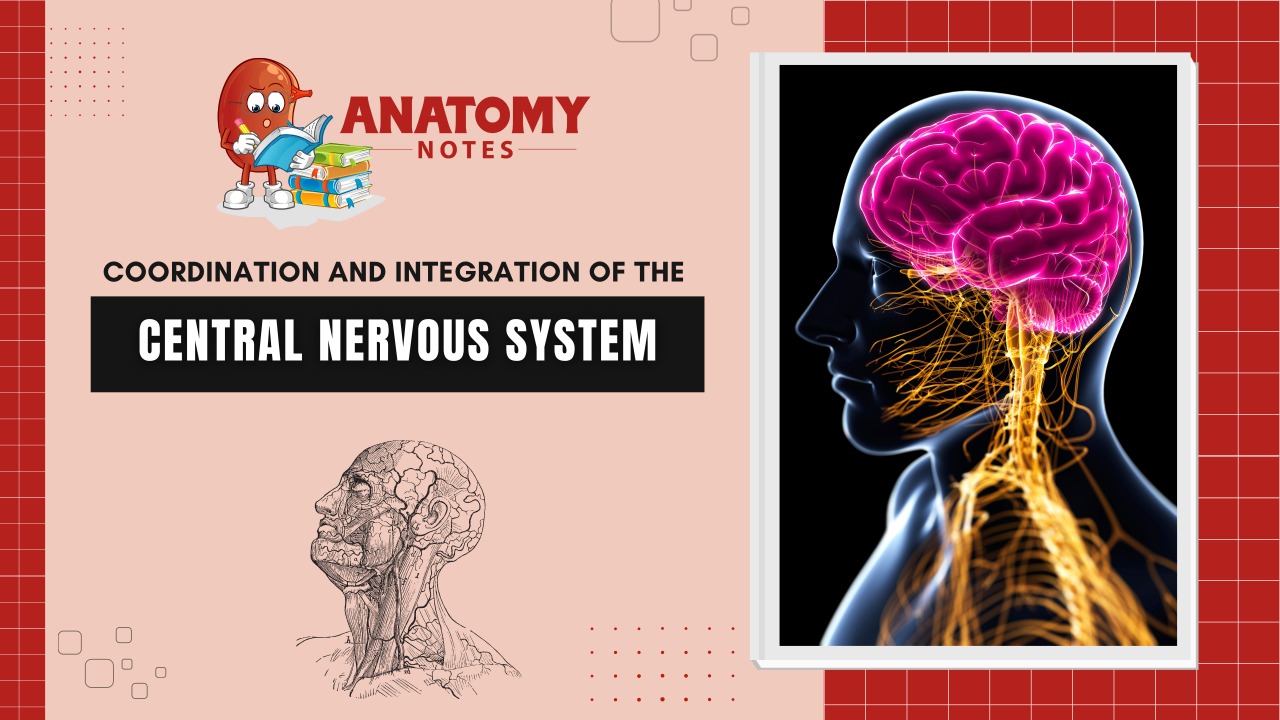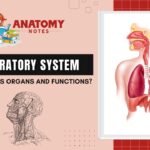The central nervous system (CNS) consists of the brain and spinal cord. This body system is responsible for integrating and coordinating the activities of the entire body.
And through which we can experience sensation, good physical structure, thoughts, emotion and helps in the coordination of body movements.
The central nervous system can be supposed to as the coordination and integration system inside the organisms.
The CNS receive signals from the peripheral nervous system, processes them, and then generates new signals to coordinate movements of various body systems.
For example, long-term and short-term metabolism and homeostasis are regulated through neighbouring interaction between the central nervous system and the endocrine system.
While the CNS is functionally prepared of neurons, other cell types such as glial cells play an essential subsidiary role. Some cranial nerves, such as the optic and olfactory nerves, are as well considered to be a part of the central nervous system.
All supplementary nerves are part of the peripheral nervous system, but they still associate with the CNS. As such, the central nervous system is the coordinated processing centre of the body.
Back to Basics in Central Nervous System Function
Coordination and Movement
The key function of the central nervous system is integration and coordination.
The CNS take delivery of input from a range of different sources, and implements an appropriate response to the stimuli, in an interconnected manner.
For example, in order to walk the CNS needs visual and integumentary cues – the texture of the surface, its incline, the presence of obstacles, and so forth.
Based on these stimuli, the CNS adjusts skeletal muscle contraction. Just the once infants learn to walk, this happens involuntarily, no longer requiring sensible thought or attentiveness.
A comparable process of receiving complex stimuli and producing a coordinated response is required for immensely varied activities – whether it is balancing a bicycle, keep up a conversation or intensifying an immune response.
Thought and Processing
The CNS, particularly the brain, is considered the physical bench for most higher-order mental functions.
Neuronal networks form the basis for thought and retention of memory.
The brain shows an essential role in the development of speech, language, and communication. These everyday tasks include an association of abstract symbols and sounds with concrete objects and emotions.
Enthusiasm, goal, reward, and satisfaction are also mediated through neuronal networks in the CNS.
Simultaneously, the limbic system of the brain also controls the most elementary emotions and drives, such as pleasure, fear, annoyance, hunger, thirstiness, tiredness and sexual desire.
Moreover, involuntary reflexes are mediated by the spinal cord, providing defence and rapidly stopping injury.
The CNS directly or indirectly influences closely every single internal organ system, whether related to respiration, digestion, excretion, circulation or reproduction.
Central Nervous System Parts

In Vertebrates, the brain and spinal cord are enclosed in bony cavities, with the brain exist in the skull, and the vertebral column defending the spinal cord.
There are 3 membranous coverings, named meninges, provide mechanical support and protection to the central nervous system. These meninges are termed as pia mater, arachnoid mater and dura mater. Pia mater, a layer near to the nervous tissue as well as dura mater lies next to the bone.
In addition, cerebrospinal fluid (CSF), produced within the 4 ventricular cavities of the brain, flows among the pia mater and arachnoid mater, providing protection from pathogens and mechanical support to the entire central nervous system. Special glial cells titled ependymal cells produce CSF.
The Brain
The brain has 3 parts i.e. the cerebrum, cerebellum, and brain stem. The cerebrum contains two large hemispheres defined by a thick band of nerve fibres named the corpus callosum.
Each of the hemispheres can be divided into four lobes, which are named the frontal, parietal, temporal and occipital lobes.
Each of these lobes is comparatively different in function, connecting to higher levels of cognition (frontal lobe), somatosensory input (parietal lobe), auditory stimuli (temporal lobe), or visual stimuli (occipital lobe).
The localization of function to dissimilar lobes was initially discovered in patients with brain damage. The advance study has shown a high level of plasticity as well as communication and integration among the neurons in different lobes.
The Cerebrum
The external layer of the cerebrum is called the cerebral cortex and this is generally pinkish-grey in colour and comprises neural cell bodies. It can be divided on the base of function into sensory, motor and association regions.
For example, the primary sensory cortex receives sensory input from the body as well as from specific sense organs. The motor regions are involved in the control and execution of voluntary motor actions.
Association areas are required for perception, abstract thinking, and associating new sensory input with memory.
The surface lobes of the cerebrum are Frontal Lobe, Parietal Lobe, Occipital Lobe and Temporal Bone.
The Cerebellum
The cerebellum is smaller than the cerebrum, is made up of two lobes, and is situated behind the brain stem.
It is involved in the coordination of dissimilar muscle groups to produce smooth movement, controlling posture and balance.
The neurons of the internal ear connected with balance relay their information to the cerebellum, which also accepts auditory and visual input.
The Brainstem
The brainstem comprises 3 parts – the midbrain, pons, and the medulla oblongata. The medulla controls most involuntary activities, while the midbrain and pons are linked with sensory functions, excitation, and enthusiasm. The brain stem connects the brain to the spinal cord.
The Spinal Cord
The spinal cord is around 17 inches in length, elongated along the length of the vertebral column in humans, beginning near the occipital bone and ending next to the lumbar region of the spine. It attaches the brain with maximum parts of the body while as well containing independent neural networks for pattern generation and for executing reflexes.
It has 31 segments, each giving rise to a pair of spinal nerves. Spinal nerves transport both sensory and motor signals among the body and the spinal cord.
The central part of the spinal cord contains an H-shaped grey column having the cell bodies of spinal cord neurons. The myelinated axons of these neurons produce white matter.
Example of Central Nervous System Activity Work for You
The basic work of the CNS is integration. It takes delivery of input from various sources and creates a cohesive response. This is principally important for animals in compound community structures, like human beings.
For example, meeting an old friend and catching up over coffee can give the impression of a relaxing incident. However, to enable a successful interaction, the CNS wants to be abuzz with activity.
It initiates at what time you see the friend and recognizes her – your brain is connecting the neurochemical signals received from the optic nerve with the appearance you have in memory.
It continues with the recollection of common understandings and the falling into the vernacular of an earlier time.
Some investigation advises that the CNS can even associate different body language with diverse sets of people or events.
You possibly will find yourself using expressions that haven’t been in your vocabulary for ages or changing your accent and posture somewhat, without being dynamically aware of it.
The CNS regains a memory and compares the memory with your present situation to create an emotional and physiological response.
Frequently Asked Questions (FAQs)
What are the three roles of the central nervous system?
The central nervous system (CNS) is responsible for receiving, interpreting, and responding to stimuli. It is composed of the brain and spinal cord, and its three main functions include sensory processing, motor control, and cognitive and emotional processing.
Where is the central nervous system located?
The central nervous system (CNS) is located in the dorsal cavity of the body, which is composed of the brain and spinal cord. The brain is located in the cranial cavity of the skull, while the spinal cord is located in the vertebral canal within the vertebral column or backbone.
Which organ is part central nervous system?
The central nervous system (CNS) is composed of two main organs, which are the brain and spinal cord. Both of these organs are involved in processing and transmitting information throughout the body, allowing us to perceive our environment, initiate movements, and carry out cognitive and emotional processes.
How many nerves are in the human body?
It is difficult to give an exact number of nerves in the human body since nerves are not discrete structures but are part of a complex network of interconnected cells that make up the nervous system. However, it is estimated that there are billions of nerve cells, or neurons, in the human body, along with trillions of supporting cells known as glia. These neurons and glia are organized into various regions and pathways within the central nervous system and peripheral nervous system to facilitate the transmission of information throughout the body.
What distinguishes the central nervous system from the peripheral nervous system?
The nervous system can be divided into two main parts: the central nervous system (CNS) and the peripheral nervous system (PNS).
The CNS includes the brain and spinal cord, which are responsible for processing and coordinating information from the body’s various sensory receptors and generating responses that control muscles and glands. The CNS is responsible for higher-order cognitive and emotional functions such as memory, learning, reasoning, and problem-solving.
The PNS, on the other hand, includes all the nerves and ganglia located outside the CNS. The PNS is further divided into the somatic nervous system, which controls voluntary movements and sensory perception, and the autonomic nervous system, which regulates involuntary processes such as heart rate, digestion, and respiration.
What are the 7 main parts of the central nervous system?
The central nervous system (CNS) is composed of two main parts: the brain and the spinal cord. The brain is divided into several major regions or structures that are interconnected and work together to control various bodily functions. Here are seven main parts of the CNS:
- Cerebrum: The cerebrum is the largest part of the brain and is responsible for conscious thought, movement, sensation, and memory.
- Cerebellum: The cerebellum, positioned beneath the cerebrum, has the role of harmonizing movement, balance, and posture.
- Brainstem: The brainstem links the brain and the spinal cord and has the vital role of controlling fundamental physiological processes like respiration, cardiac rhythm, and vascular tension.
- Spinal Cord: The spinal cord is a long, thin, tubular bundle of nerves that extends from the brainstem to the lower back and is responsible for relaying sensory and motor information between the brain and other parts of the body.
- Thalamus: The thalamus is a small structure in the brain that acts as a relay station for sensory information.
- Hypothalamus: The hypothalamus is a small, but important part of the brain that plays a crucial role in regulating body temperature, hunger, thirst, and other autonomic functions.
- Limbic System: The limbic system is a collection of structures in the brain that play a role in emotion, motivation, and memory. It includes the amygdala, hippocampus, and several other structures.




